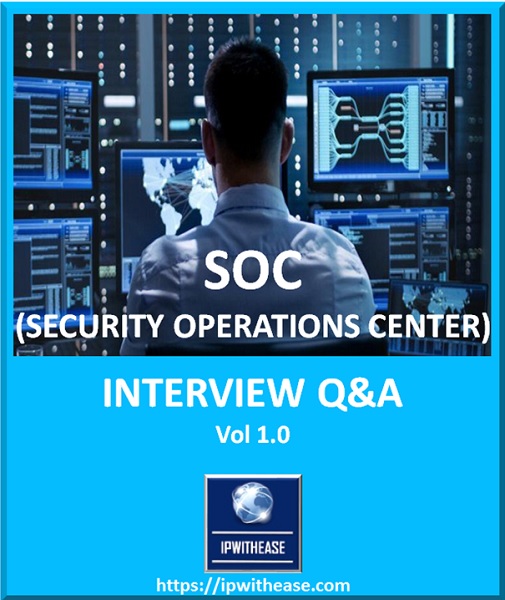Google ADs

ANSWERS @https://ipwithease.com/shop/
- Define the term used for practicing the bypass of a security system in order to search and correct the weak points on a computer or a network vulnerable to attacks.
- Name the step used by SOC analysts to test the networks, web based applications and computers for malicious components.
- What are the different levels of data classification and why are they required?
- What does the prevention or future presentation of a crime via collection, assessment and reporting of the data in the event of a breach known as?
- Name the stage where the negative effects resulted from a breach or an attack are handled, right from curtailing the impact to bringing changes in the security controls.
- What does SIEM stands for?
- What do you mean by Service Desk Ticketing System and how does it helps a SOC analyst?
- Explain in detail the job roles and responsibilities associated with a SOC analyst.
- How will you differentiate between TCP and UDP?
- Define the term ‘traceroute’?
- What is the key difference between on premises and the cloud in terms of cybersecurity?
- What does the term RDP stands for?
- How will you distinguish between symmetric and asymmetric encryption?
- If during a transmission phase, you are required to both compress and encrypt the data, then which one would you do first?
- What do you understand by the term SSL?
- How will you differentiate between SSL, HTTPS and TLS?
- Why do you think DNS monitoring is extremely crucial?
- Name the port that Ping work over?
- How can you distinguish among the terms- a threat, a vulnerability, and a risk?
- What is the common principle that you follow while securing a server?
- What are the methods that a company can use in order to immune itself from SQL injection?
- Briefly mention some common web server vulnerabilities.
- List some of the common techniques used for preventing web server attacks.
- Briefly mention some of the WEP (Wired Equivalent Privacy) cracking tools?
- Define Phishing? How you can prevent it?
- Define WEP cracking? What are its basic types?
- What is 80/20 networking rule?
- Define data leakage? Mention some of the factors that lead to data leakage.
- Mention some of the steps that you can take in order to prevent data loss?
- What do you understand by Cryptography?
- What is difference between IPS and IDS?
- What do understand by CIA triad?
- Give one similarity and dissimilarity between Encryption and Hashing.
- Define a Firewall and its key benefits.
- Name the response codes that you can receive via a Web Application.
- Define traceroute and the role performed by it?
- Differentiate between the security systems HIDS and NIDS.
- Differentiate between Network based firewall and Host based Firewall?
- What do you understand by the term Port Scanning?
- What do you understand by Black hat, Grey hat and White hat hackers?
- A BIOS configuration is password protected. How would you reset it?
- Define the term Botnet.
- What do you understand by Salted Hashes?
- What do you understand by 2FA and what is the way to implement it for public websites?
- Define Cognitive Cybersecurity.
- What is required to be done in the following situation- You get an email from your bank informing you that there is a certain problem with your concerned account. The email is also containing a set of instructions along with a link to directly log into your account and resolve the problem. What is best to be done in that situation?
- What will you do in the following situation- The cursor of your computer mouse starts to move on the computer screen on its own and starts clicking things over your desktop. What is required to be done?
- You have received an e-card over your mail from a friend. In order to get the card you are required to click on the attachment. What will you do?
- What are rainbow tables?
- How does reverse engineering helps a SOC analyst with software analysis?
ANSWERS @https://ipwithease.com/shop/
Check our new website https://networkinterview.com For Free Video Courses, TechBlog, Mindmaps, Cheatsheets and much more.
ABOUT THE AUTHOR

Founder of AAR TECHNOSOLUTIONS, Rashmi is an evangelist for IT and technology. With more than 12 years in the IT ecosystem, she has been supporting multi domain functions across IT & consultancy services, in addition to Technical content making.
You can learn more about her on her linkedin profile – Rashmi Bhardwaj



